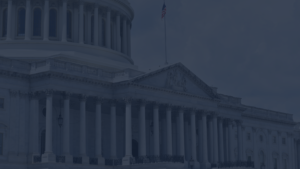Political advertising has long been a hotbed of myths and misconceptions, often clouding the judgment of even the most seasoned campaigners. From the notion that ads don’t really influence voters to the idea that all publicity is good publicity, the misinformation surrounding political ads can be as thick as fog on a San Francisco morning.
But fear not, dear candidates and campaign managers! In this post, we’re setting the record straight and shining a light on the truths behind those persistent myths. Get ready to arm yourself with knowledge that will not only debunk the myths but also give you a leg up in the game of political advertising.

Understanding Political Advertising
Why Political Advertising Matters
Political ads play a crucial role in shaping public perception and influencing voter behavior. They’re not just flashy clips interrupting your favorite TV show—they’re strategic tools that can sway undecided voters, reinforce core supporters, and even demobilize the opposition. When done right, these ads convey a candidate’s message more effectively than any other medium.
They distill complex policy positions into digestible sound bites and emotional appeals that resonate with the electorate. Moreover, in an age where digital platforms reign supreme, political ads can be laser-focused, targeting specific demographics with pinpoint accuracy. So, whether you’re running for local office or aiming for the Senate, understanding the impact and importance of political ads can be the game-changer your campaign needs.

History of Political Advertising
The history of political advertising is as rich and varied as the political landscape itself. It all started with simple posters and handbills in the 19th century, evolving into radio jingles and TV spots by the mid-20th century. Remember Eisenhower’s catchy “I Like Ike” ad? That was a game-changer.
Fast forward to today, and we’re deep into the digital age where social media, email campaigns, and even influencer endorsements are part of the mix. The evolution reflects changes in technology and media consumption habits, but the core objective remains the same: to persuade and mobilize voters. Understanding this history isn’t just a trip down memory lane; it’s a way to glean insights into what has worked, what hasn’t, and how to adapt these lessons for modern campaigns.

Types of Political Advertising
Political advertising isn’t a one-size-fits-all endeavor. There are various types designed to achieve different goals. Traditional TV and radio ads remain staples, offering broad reach and high impact. Print ads in newspapers and magazines cater to more localized audiences. Then there’s digital advertising—think social media, Google ads, and email campaigns—perfect for targeting specific voter segments with precision.
Don’t forget direct mail, often underestimated but highly effective for reaching older demographics. Outdoor advertising, like billboards and posters, ensures visibility in high-traffic areas. Each type has its strengths and weaknesses, and a well-rounded campaign often utilizes a mix of these to maximize impact.
By understanding the different types, you can better allocate your budget and craft a more effective advertising strategy.

Common Myths About Political Ads
Myth 1: Ads Don’t Influence Voters
One of the most persistent myths is that political ads don’t really influence voters. This couldn’t be further from the truth. Research consistently shows that well-crafted ads can significantly impact voter decisions. While they may not convert staunch opponents, they can sway undecided voters and reinforce the commitment of your base.
Ads also play a crucial role in framing the narrative; they highlight key issues, define candidate personas, and set the agenda. Moreover, the repetitive nature of ads helps in message retention, making it more likely for voters to remember and act on what they’ve seen. So, dismissing the power of political ads is like leaving a crucial tool out of your campaign arsenal.

Myth 2: Negative Ads Backfire
Another common misconception is that negative ads always backfire. While it’s true that negative campaigning can be a double-edged sword, it’s far from universally detrimental. In many cases, negative ads are highly effective at undermining opponents and shifting the focus onto their flaws.
These ads can mobilize your base by highlighting what’s at stake and can also demobilize the opposition by sowing doubt and disillusionment. However, the key is balance and credibility. Overly aggressive or blatantly false attacks can indeed backfire, damaging your own credibility in the process. But strategically crafted negative ads, grounded in facts and delivered with finesse, can be powerful tools in your campaign toolkit.

Myth 3: Digital Ads Are Ineffective
Some folks still believe that digital ads are ineffective compared to traditional media. This myth needs busting. In today’s digital age, online platforms offer unparalleled reach and targeting capabilities.
Digital ads can be tailored to specific demographics, interests, and even behaviors, ensuring that your message lands in front of the right eyes. Unlike traditional media, digital advertising allows for real-time tracking and analytics, enabling you to measure effectiveness and tweak strategies on the fly. Moreover, digital ads often come at a fraction of the cost of TV or radio spots, offering a higher return on investment. Ignoring digital ads in your campaign strategy is akin to leaving votes on the table.
So, embrace the digital realm; it’s where a significant chunk of your voter base resides.

Misconceptions in Political Advertising
Misconception 1: Bigger Budget Means Better Campaign
It’s easy to assume that the campaign with the biggest budget will automatically win, but that’s a misconception. A hefty budget can give you more options, but it doesn’t guarantee success. What truly matters is how effectively those funds are used.
A well-crafted message, targeted to the right audience, can have a greater impact than a broadly cast, expensive ad. Creativity and strategic planning often trump sheer spending power. Smaller campaigns can leverage grassroots efforts, social media, and targeted digital ads to compete with larger, more well-funded opponents. Efficiency and smart allocation of resources can level the playing field. So, don’t be discouraged if your campaign budget isn’t overflowing.
Focus on crafting compelling messages and strategically placing your ads for maximum impact.

Misconception 2: All Publicity Is Good Publicity
The old adage “all publicity is good publicity” doesn’t always apply in the realm of political advertising. Negative headlines or controversial ads can do more harm than good. While it’s true that visibility is crucial, not all attention is beneficial. Scandals, missteps, or poorly thought-out ads can erode trust and alienate voters.
The backlash can be swift and severe, especially in today’s fast-paced digital world where news spreads like wildfire. It’s essential to ensure that your publicity aligns with your campaign’s values and goals. Positive and well-crafted messages build credibility and trust, while negative publicity can derail even the most promising campaigns. So, strive for quality over quantity when it comes to publicity. Aim to generate buzz that advances your narrative and strengthens your connection with voters.

Misconception 3: Only TV Ads Matter
Believing that only TV ads matter in a political campaign is another misconception that needs debunking. While TV ads have a broad reach and can make a significant impact, they’re just one piece of the puzzle. In today’s media landscape, a multi-channel approach is essential.
Digital ads, social media campaigns, email marketing, and even traditional methods like direct mail all play vital roles. Each platform offers unique advantages and can reach different segments of the electorate. For instance, younger voters are more likely to engage with content on social media, while older voters may respond better to direct mail and newspaper ads. By diversifying your advertising strategy, you can ensure that your message reaches a wider audience and reinforces your campaign’s key points across multiple touchpoints.
So, don’t put all your eggs in the TV basket; embrace a holistic approach for a more effective campaign.

Strategies for Effective Political Ads
Crafting a Compelling Message
Crafting a compelling message is the cornerstone of any successful political ad. Your message should be clear, concise, and resonate emotionally with your target audience.
Start by understanding what issues matter most to your voters and align your message accordingly. Use simple language, avoiding jargon and complex terms that might alienate or confuse. A compelling message often includes a strong call to action, urging voters to support, donate, or spread the word. Remember, people remember stories more than facts, so weave personal anecdotes or real-life examples into your message to make it more relatable.
Consistency is key—ensure your message stays uniform across all platforms to build recognition and trust. By focusing on what truly matters to your audience and communicating it effectively, you can create an ad that not only grabs attention but also inspires action.

Targeting the Right Audience for Your Political Advertising
Targeting the right audience is crucial for the success of your political ads. You can spend millions on a flashy ad, but if it doesn’t reach the right people, it’s money down the drain. Start by defining your core voter base—who are they, what do they care about, and where do they consume media?
Use voter data and analytics to narrow down your audience. Digital platforms like Facebook and Google offer sophisticated targeting options, allowing you to focus on specific demographics, interests, and even behaviors. Tailor your message to resonate with these groups, addressing their unique concerns and aspirations. Don’t forget to segment your audience; different messages might be more effective for different groups.

Measuring Ad Effectiveness
Measuring ad effectiveness is essential to understanding what’s working and where to pivot. Start by setting clear, measurable goals—are you aiming for increased voter turnout, higher engagement, or more donations? Use analytics tools to track key performance indicators (KPIs) like click-through rates, engagement levels, and conversion rates.
Digital platforms offer real-time data, allowing you to adjust your strategy on the fly. For TV and radio ads, consider conducting surveys or focus groups to gauge public sentiment and recall. Don’t overlook the power of A/B testing; run different versions of your ad to see which one resonates more with your audience. Collecting and analyzing this data helps you refine your message and targeting, ensuring your ad budget is spent wisely.
By continuously measuring and optimizing, you can achieve better results and make informed decisions that drive your campaign forward.

Real-World Examples and Case Studies
Successful Political Advertising Campaigns and Lessons
Studying successful campaigns can offer invaluable lessons for your own efforts. Take Barack Obama’s 2008 presidential campaign, for instance. It revolutionized political advertising by leveraging social media and data analytics to engage young voters and build a grassroots movement. Another example is Donald Trump’s 2016 campaign, which effectively used targeted digital ads and a strong, consistent message to galvanize his base.
Locally, Alexandria Ocasio-Cortez’s 2018 Congressional run demonstrated the power of authentic storytelling and a robust ground game, despite being significantly outspent. Each of these campaigns succeeded by understanding their audience, crafting compelling messages, and efficiently utilizing their resources. The takeaway? A well-executed strategy tailored to your unique strengths and voter base can outperform even the most well-funded opponents. Analyzing these case studies helps you identify best practices and avoid common pitfalls in your own political advertising.

Famous Political Advertising Failures and What Went Wrong
Learning from famous failures can be just as instructive as studying successful campaigns. Take Hillary Clinton’s 2016 presidential campaign, for instance. Despite having a massive budget and extensive media coverage, the campaign failed to resonate with key voter groups in swing states.
The lack of a clear, compelling message and over-reliance on negative ads against Trump were significant factors. Another example is Jeb Bush’s 2016 primary run, which suffered from a perceived lack of enthusiasm and an inability to pivot from traditional media to digital platforms. These failures underscore the importance of message clarity, voter engagement, and adaptability. Ignoring any of these elements can lead to costly missteps. By analyzing what went wrong in these campaigns, you can identify potential pitfalls and ensure your strategy is robust, adaptable, and resonant with your target audience.

Innovative Political Advertising Approaches in Recent Elections
Recent elections have showcased some truly innovative approaches in political advertising. Andrew Yang’s 2020 presidential campaign, for instance, effectively used meme culture and podcasts to engage younger voters and build a passionate online community.

Another groundbreaking example is Bernie Sanders’ 2020 campaign, which leveraged text messaging and grassroots fundraising to mobilize a large, active supporter base without relying heavily on traditional media. Additionally, Pete Buttigieg’s campaign utilized data analytics to micro-target ads and optimize resource allocation, helping him gain significant traction in a crowded field.
These campaigns highlight the importance of thinking outside the box and embracing new platforms and technologies. By adopting innovative strategies, you can break through the noise, reach untapped voter segments, and create a more engaging and effective campaign.
The lesson? Don’t be afraid to experiment and adapt; innovation can be your secret weapon in modern political advertising.





